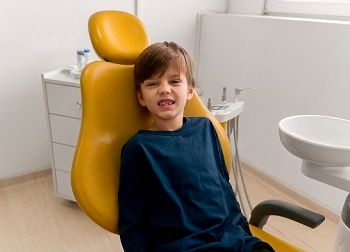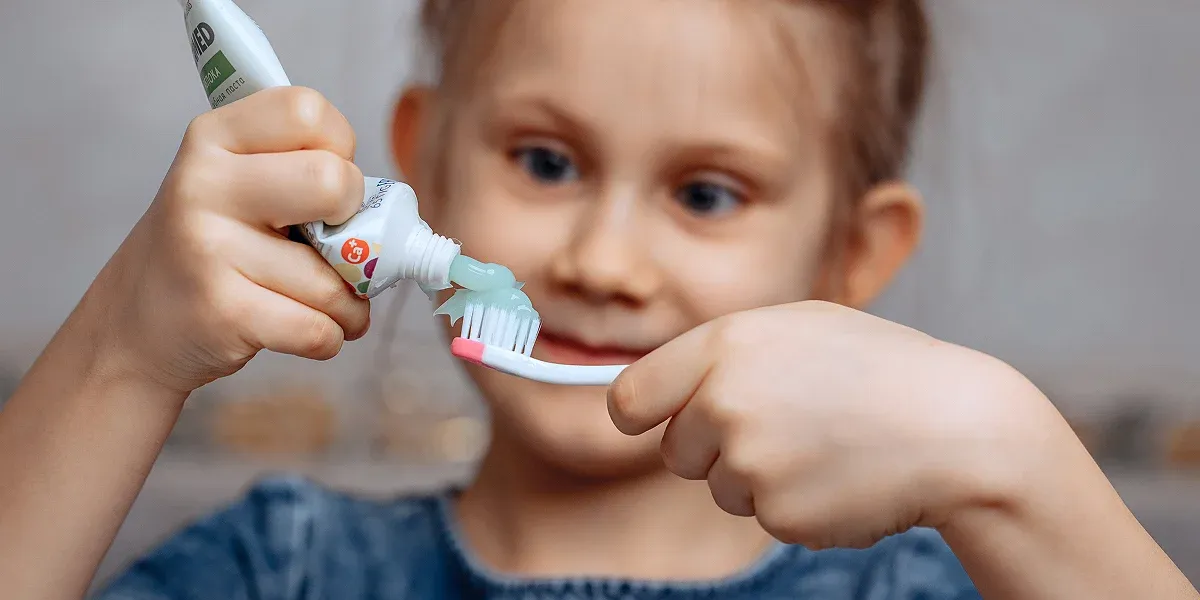
Common Pediatric Dental Procedures: Understanding the Basics
Pediatric dental procedures are not just routine check-ups or treatments but are vital in shaping children’s oral health and overall well-being. Early dental care and understanding the importance of these procedures are integral to establishing healthy dental habits that can last a lifetime.
This blog will discuss the commonly employed pediatric dental procedures and shed light on the importance of early dental care. Understanding these procedures will allow you to navigate your child’s dental journey by ensuring his smile remains bright and healthy. So, let’s discover the essentials together.
Pediatric Dental Procedures and Their Benefits
Pediatric dental procedures refer to a range of dental treatments and interventions specifically tailored to meet the oral health needs of children. These procedures encompass preventive measures and restoration treatments to ensure optimal oral health and development of young patients.
Preventive pediatric dental procedures are dental treatments and interventions designed to protect children’s oral health and prevent dental problems. These procedures aim to maintain healthy teeth and gums, reduce the risk of cavities and gum disease, and promote good oral hygiene habits from an early age.
Pediatric restorative dental procedures are treatments and interventions that aim to repair or restore teeth damaged or affected by dental issues. These procedures address dental problems and restore the impacted teeth’ function, structure, and aesthetics.
Pediatric dental procedures serve various uses and benefit children’s oral health and well-being. Here are the benefits of pediatric dental procedures:
- These procedures allow for the early detection of dental problems, including cavities, misalignments, and developmental abnormalities. Early intervention can address these issues promptly, potentially minimizing the need for more extensive treatments later.
- Pediatric procedures, such as teeth cleanings and dental sealants, help maintain optimal oral health by removing plaque and bacterial growth that may lead to decay and gum disease. They also provide protective barriers to prevent cavities and promote good oral hygiene practices.
- Pediatric restorative dental procedures, such as dental fillings and crowns, restore teeth damaged by decay, trauma, or developmental anomalies. They repair tooth structure, restore functionality, and prevent further deterioration or loss of teeth.

- Pediatric dental procedures focus on preserving primary teeth until they naturally exfoliate. Keeping these teeth is essential for maintaining proper spacing, facilitating adequate chewing and speech development, and acting as placeholders for permanent teeth.
- Such procedures also include orthodontic evaluations to assess the alignment and development of the teeth and jaws. Early identification of orthodontic issues allows for timely intervention, guiding proper dental growth and reducing the complexity of future orthodontic treatments.
- Finally, these dental procedures address toothaches, dental trauma, and other dental emergencies, providing prompt pain relief and improving a child’s comfort. It promotes overall well-being, allows children to eat and speak comfortably, and alleviates dental-related anxiety.
- Children receive education and guidance on oral hygiene through pediatric dental procedures, including brushing, flossing, and food intake. These procedures help establish lifelong habits, improve oral health, and prevent future dental issues.
By utilizing pediatric dental procedures, children can benefit from improved oral health, reduced risks of dental problems, and enhanced comfort.
“A healthy smile begins with early dental care. Pediatric dental procedures lay the foundation for a lifetime of oral health and confident smiles”.
What Are Common Procedures Employed in Pediatric Dentistry?
Preventive and restorative pediatric dental procedures play a significant role in maintaining children’s oral health, preventing dental problems, and preserving their natural teeth. Let’s discuss the typical pediatric dental procedures to make an informed choice about your child’s oral health care.
Preventive Pediatric Dental Procedures
- Dental Examinations
Dental examinations are routine check-ups performed by pediatric dentists to evaluate a child’s oral health. During these examinations, the dentist assesses the teeth, gums, and oral structures. He checks for signs of decay, gum disease, or any abnormalities in dental development. Dental examinations play a crucial role in the early detection of dental issues, allowing for timely intervention and preventive measures.
- Teeth Cleaning (Prophylaxis)
Teeth cleaning is a professional dental procedure designed to eliminate plaque, tartar, and stains that accumulate on the teeth. During this procedure, pediatric dental hygienists utilize specialized instruments to meticulously clean the teeth, including hard-to-reach areas that may be challenging to address through regular brushing and flossing. This procedure helps prevent tooth decay and gum disease by eliminating the buildup of harmful bacteria and maintaining optimal oral hygiene.
- Fluoride Treatment
Fluoride treatments are vital in strengthening tooth enamel and effectively preventing tooth decay. This dental procedure involves the application of a fluoride solution to the teeth, which helps fortify the enamel. The American Dental Association (ADA) recommends fluoride treatments for children at high risk of developing cavities. Research shows that fluoride can reduce tooth decay in children by up to 30%. This preventive procedure minimizes the risk of cavities and helps maintain strong, healthy teeth.
- Dental Sealants
Dental sealants are thin plastic coatings carefully applied to the chewing surfaces of molars, which are especially vulnerable to decay. The sealant material fills the deep grooves and pits, creating a smooth surface that prevents food particles and bacteria from accumulating. Dental sealants act as a protective barrier, reducing the risk of cavities in these vulnerable areas and making brushing and cleaning easier.
Restorative Pediatric Dental Procedures
- Dental Fillings
Dental fillings are restorative procedures used to repair teeth affected by cavities or decay. Pediatric dentists remove the decayed portion of the tooth and fill the tooth cavity with a suitable dental material. Composite resin fillings, tooth-colored and aesthetically pleasing, are commonly used in pediatric dentistry. These fillings restore the tooth’s structure, function, and appearance, preventing further decay and preserving the natural tooth.

- Stainless Steel Crowns
Pediatric dentistry often employs stainless steel crowns to restore primary teeth with extensive decay or damage. These durable crowns provide long-term protection until the primary tooth naturally falls out. Stainless steel crowns help restore the tooth’s function, maintain proper spacing, and prevent further deterioration.
- Pulpotomy
A pulpotomy is a procedure aimed at removing the infected pulp while the healthy pulp is left intact. It applies to primary teeth with deep decay that has reached the nerve. The dentist then uses a medicated filling to promote healing and protect the remaining pulp. This procedure aims to alleviate pain, eliminate infection, and preserve the primary tooth until it naturally exfoliates.
- Pulpectomy
During a pulpectomy, the dentist removes the affected pulp tissue from a primary tooth’s pulp chamber and canals. Afterward, the dentist disinfects the area and places a filling material to seal the tooth. Pediatric dentists commonly perform a pulpectomy to save a primary tooth when the pulp is significantly compromised.
- Extractions
Tooth extractions are dental procedures that involve the careful removal of a tooth. In pediatric dentistry, extractions may be necessary if a tooth is severely decayed, damaged, or causing orthodontic issues. The dentist carefully extracts the tooth while ensuring minimal discomfort for the child. Extractions may involve using space maintainers to preserve proper spacing and facilitate the eruption of permanent teeth.
- Space Maintainers
Space maintainers are custom-made dental appliances that serve the purpose of preserving the space left by a primary tooth that’s prematurely lost. These devices prevent adjacent teeth from shifting, ensuring enough room for the permanent tooth to erupt correctly. Space maintainers aid in maintaining proper alignment and preventing orthodontic complications.
Are Pediatric Dental Procedures Painful?
Pediatric dental procedures are generally painless. Dentists take steps to minimize potential discomfort. A local anesthetic numbs the area for a specific process, such as dental fillings or extractions. It ensures that the child does not feel pain during the process.
Pediatric dentists sometimes use sedation techniques to help children relax and minimize anxiety during more complex or lengthy procedures. Different sedation options are available for pediatric dental procedures. These may include nitrous oxide (commonly known as laughing gas), oral sedation, or intravenous (IV) sedation.
Pediatric dental professionals use age-appropriate language, explain procedures gently and understandably, and employ behavioral management techniques to ensure children feel comfortable during dental visits.
Final Words
Understanding the basics of pediatric dental procedures is crucial for parents and caregivers who seek to prioritize their children’s oral health. By familiarizing ourselves with preventive and restorative procedures, we can actively nurture our children’s healthy smiles and promote lifelong oral well-being.
Contact Stockton dentist for kids, Sajjad Rizvi DDS, at Happy Kids Dental today to know more about Common Pediatric Dental Procedures.
Resource:
The Importance of Pediatric Dentistry: Why It Matters?
*This media/content or any other on this website does not prescribe, recommend, or prevent any treatment or procedure. Therefore, we highly recommend that you get the advice of a qualified dentist or other medical practitioners regarding your specific dental condition.*
Subscribe To Our Newsletter
Get Updates And Learn From The Best


